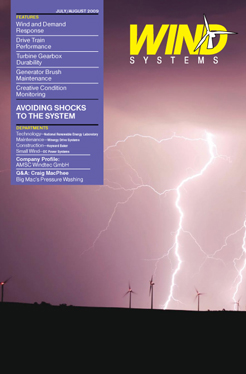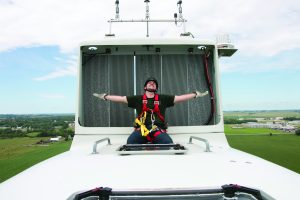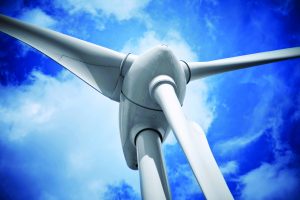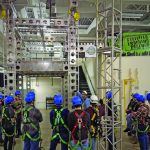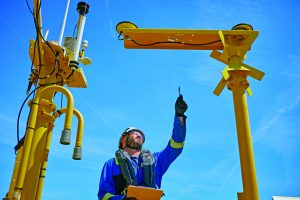Gearbox reliability is a crucial issue for the wind energy industry. The gearbox and its supporting components (i.e. shafts, generator, brakes, and lubrication system) account for roughly 30 percent of the turbine’s capital cost, excluding foundations and site infrastructure, and the gearbox is the most expensive component to repair or replace. Recurrent gearbox failures have plagued the industry since the technology’s inception, and they continue to prevent turbines from achieving their intended 20-25 year lifespan. Although gearboxes have evolved over the past two decades, failures persist. “The end users and owner-operators say we’re only getting five years, or in some cases three years out of these gearboxes,” says Sandy Butterfield, principal engineer at the National Renewable Energy Laboratory (NREL) and project lead for the U.S. Department of Energy (DOE) Wind Turbine Gearbox Reliability Collaborative (GRC).
The GRC is a multi-year effort by the DOE Wind Program that brings together leading wind turbine manufacturers, wind plant operators, gearbox suppliers, and consultants from around the world. Its goal is to validate the typical design process—from the wind turbine system loads to bearing rating—through a comprehensive dynamometer and field-test program. To achieve this the GRC will conduct field and dynamometer tests, and analysis on two identical 750-kW gearboxes that have been modified to reflect current 1.5-MW turbine configurations. The gearboxes will be heavily instrumented to measure all pertinent bearing and gear reactions. One gearbox will be tested in a wind turbine in a nearby wind plant, and the other on NREL’s 2.5-MW dynamometer at the National Wind Technology Center.
The field tests, planned to begin this summer, will show the real bearing reactions under start up and shut down transients, high wind operation, control induced torque transients, and high nacelle accelerations. The dynamometer tests will try to reproduce loads measured in the field on the dynamometer and compare internal gear and bearing reactions to those measured in the field. Most commercial dynamometers can only apply steady torque loads instead of the high transient loads and non-torque loads that wind turbines actually experience. NREL’s dynamometer is capable of applying both torque transient loads and non-torque loads. Other aspects to be investigated include:
• Forced lubrication—New wind turbine designs channel lubrication directly to the bearing races where low revolutions per minute at high torque cause a lot of heat and pressure. GRC gearbox modifications will include forced bearing lubrication, including the planet bearings, which are difficult to reach
• Oil cleanliness—New turbines have more aggressive filtration systems. The GRC lubrication system will have 10-micron filtration in the main lubrication loop, 3-micron filtration in a low-flow kidney loop, and condition monitoring equipment to measure and record particle counts in the lubrication system during operation.
• Condition monitoring—The GRC turbines will incorporate condition monitoring systems that implement stress wave, vibration, and lubricant monitoring techniques to detect problems that could lead to system failure.
• Micropitting—Prevalent in wind turbine gearboxes, micropitting occurs on gear teeth and bearings and can cause bearing failure.
• Load distribution—Uneven distribution of loads can damage gear and bearing components.
The GRC will also be conducting an analysis round robin to validate gearbox design tools. In the past wind turbine manufacturers used simple gearbox models to predict the lifetime performance of new designs, but design tools have become much more sophisticated, including finite element models of the gearbox housing, shafts, gears, and bearings. This level of sophistication has been used in the automotive industry with great success, but has never been validated for wind turbine application. The GRC offers researchers a unique opportunity to validate these new design tools and processes using previously unavailable test data. The final result will be a new design guideline developed with the participation of all members of the collaborative.
As work progresses, researchers plan to develop a GRC Failure Database containing information provided by gearbox rebuilding shops that have been trained to inspect and disassemble wind turbine gearboxes to preserve crucial failure data. The purpose is to provide members of the wind industry with information to help prevent failures and avoid costly repairs in current and future wind plants.
Gearbox reliability is crucial, and the efforts of the GRC are specifically targeted at understanding and mitigating this issue to improve reliability, reduce costs, and encourage increased deployment of wind energy to produce clean electricity.
















